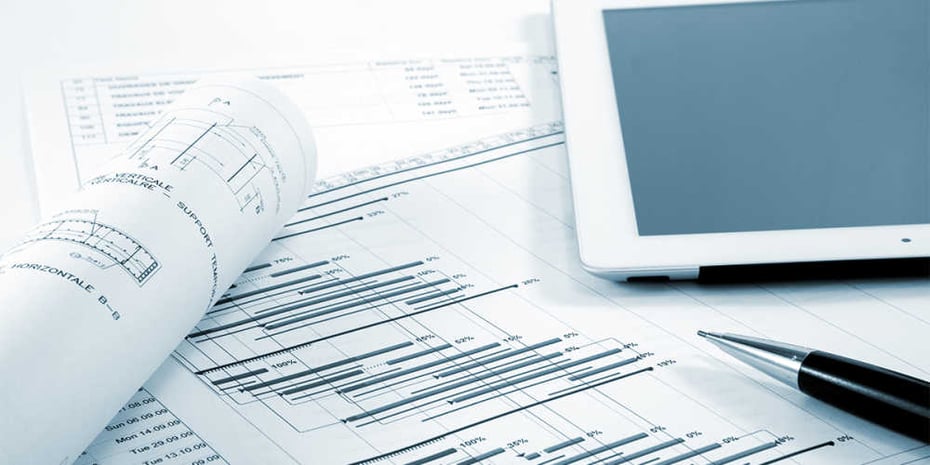Protect Your Success: Construction Document Management Strategies for Specialists
Protect Your Success: Construction Document Management Strategies for Specialists
Blog Article
Optimizing Task Partnership: Designer's Best Practices in Building And Construction File Management
In the intricate world of architectural projects, the reliable monitoring of building documents stands as a keystone for success. Designers, with their meticulous focus to detail and innovative style solutions, are entrusted with orchestrating a harmony of timelines, resources, and stakeholders. However, among this complexity lies a sixty-four-thousand-dollar question: exactly how can architects enhance collaboration processes to improve project results? By discovering crucial strategies such as leveraging cloud-based systems, establishing durable interaction procedures, and making sure data safety, architects can raise their file monitoring methods to brand-new heights.
Leveraging Cloud-Based Systems
Leveraging cloud-based systems is a basic technique for modern designers in enhancing construction file monitoring processes. By transitioning from conventional paper-based systems to cloud solutions, designers can improve cooperation, improve document accessibility, and improve overall project performance. Cloud-based platforms use designers the capacity to store, share, and update construction records in real-time, making certain that all group members have access to one of the most existing info no matter their area. This availability promotes seamless interaction and sychronisation among task stakeholders, bring about fewer mistakes and hold-ups in the building process.
Additionally, cloud-based systems provide a secure environment for storing delicate task information, offering encryption, regular back-ups, and customer permission settings to safeguard data integrity. Architects can likewise take advantage of the scalability of cloud options, allowing them to change storage space capacity and performance based upon project demands. Overall, leveraging cloud-based platforms encourages architects to maximize their construction paper monitoring processes, driving higher collaboration, efficiency, and success in their jobs.
Applying Version Control Solution
Having actually established the benefits of cloud-based platforms in building and construction paper monitoring, architects can now improve their record control processes by executing Version Control Equipment. Variation Control Systems (VCS) are necessary devices that track changes in papers, making certain that employee are always functioning with the most recent and most precise details. By executing VCS, designers can keep a central repository where all job records are kept, making it possible for smooth collaboration while decreasing the risk of errors and variation conflicts.
One secret advantage of Variation Control Equipment is the ability to track the total background of record modifications, allowing users to return to previous variations if needed (construction document management). This feature is especially important in construction projects where design versions and adjustments are common. Additionally, VCS facilitates better communication among employee by providing a clear audit path of that made certain modifications and when they were made. This openness not only boosts responsibility but additionally assists in dealing with disputes or inconsistencies that may emerge during the project lifecycle.
Establishing Communication Methods
To make sure efficient and efficient job coordination, architects have to establish clear and robust interaction protocols within their building and construction file management procedures. Communication methods define the techniques, frequency, and networks where staff member exchange info, updates, and feedback. One necessary element of developing these methods is identifying a central interaction system where all project-related discussions and file sharing can occur. This platform might be a task administration software program, email strings, or cloud-based storage space services. By establishing guidelines on how info is distributed and just how employee connect with each other, engineers can improve the circulation of information and protect against miscommunications or delays in the building procedure.
Moreover, communication protocols ought to also include standards on just how to handle conflicts, modification orders, and urgent issues that may develop throughout the project lifecycle. Establishing a structured strategy to communication makes certain that all stakeholders are on the exact same web page, promotes transparency, and inevitably adds to the effective completion of the construction job.
Utilizing BIM Software for Sychronisation
BIM software program plays a crucial duty in enhancing coordination amongst project staff member in the building and construction sector. Structure Details Modeling (BIM) facilitates collaboration by providing a centralized system where engineers, engineers, specialists, and various other stakeholders can interact in a worked with fashion. With BIM software application, job participants can access and update a shared design that has comprehensive information concerning the structure style, building components, and job schedules.

Furthermore, BIM software application allows real-time cooperation and interaction helpful resources amongst employee, no matter their physical location. With cloud-based BIM platforms, project stakeholders can access the most recent job details, track modifications, and make informed choices without delay. On the whole, leveraging BIM software program for sychronisation enhances task efficiency, performance, and eventually results in effective job outcomes.
Ensuring Information Safety and Compliance
In the realm of construction document management, guarding information integrity and ensuring regulatory conformity are vital factors to consider for engineers and other task stakeholders. Designers should apply durable security procedures to safeguard delicate project information from unauthorized accessibility or breaches. Making use of safe and secure cloud storage options with file encryption procedures and gain access to controls can aid mitigate dangers related to information theft or loss. Regularly updating software application and systems, performing protection why not try these out audits, and providing personnel training on data safety ideal techniques are important steps in preserving a safe and secure setting for construction file administration.

Conclusion
In final thought, engineers can optimize task collaboration in construction file administration by leveraging cloud-based platforms, executing version control systems, developing communication methods, making use of BIM software application for sychronisation, and ensuring information safety and compliance. These best techniques assist streamline the building and construction process, boost interaction visit here among job stakeholders, and enhance effectiveness in project shipment. By complying with these guidelines, architects can effectively manage construction files and promote successful project results.
Via BIM software, project participants can access and upgrade a common version that contains detailed details about the building design, construction components, and job schedules.
Through cloud-based BIM platforms, job stakeholders can access the most current job details, track adjustments, and make educated choices promptly - construction document management. Overall, leveraging BIM software for sychronisation improves job effectiveness, productivity, and eventually leads to successful project outcomes
In conclusion, architects can optimize project cooperation in building and construction record monitoring by leveraging cloud-based systems, carrying out version control systems, establishing communication methods, making use of BIM software program for sychronisation, and guaranteeing data security and conformity. These ideal methods assist improve the construction procedure, enhance communication amongst project stakeholders, and improve efficiency in job delivery.
Report this page